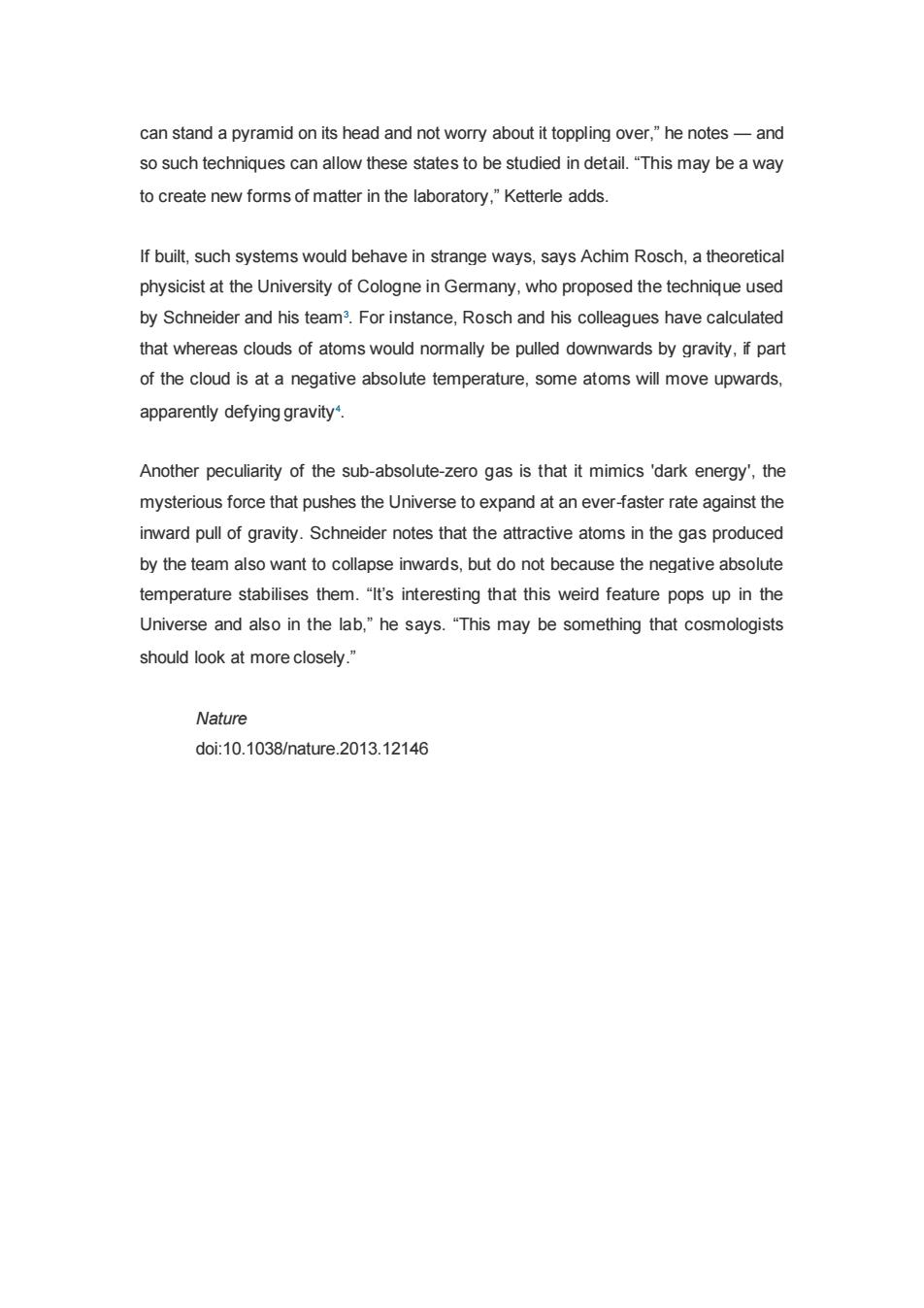正在加载图片...

can stand a pyramid on its head and not worry about it toppling over,"he notes-and so such techniques can allow these states to be studied in detail."This may be a way to create new forms of matter in the laboratory,"Ketterle adds. If built,such systems would behave in strange ways,says Achim Rosch,a theoretical physicist at the University of Cologne in Germany,who proposed the technique used by Schneider and his team3.For instance,Rosch and his colleagues have calculated that whereas clouds of atoms would normally be pulled downwards by gravity,if part of the cloud is at a negative absolute temperature,some atoms will move upwards, apparently defying gravity4. Another peculiarity of the sub-absolute-zero gas is that it mimics 'dark energy',the mysterious force that pushes the Universe to expand at an ever-faster rate against the inward pull of gravity.Schneider notes that the attractive atoms in the gas produced by the team also want to collapse inwards,but do not because the negative absolute temperature stabilises them."It's interesting that this weird feature pops up in the Universe and also in the lab,"he says."This may be something that cosmologists should look at more closely." Nature doi:10.1038/nature.2013.12146can stand a pyramid on its head and not worry about it toppling over,” he notes — and so such techniques can allow these states to be studied in detail. “This may be a way to create new forms of matter in the laboratory,” Ketterle adds. If built, such systems would behave in strange ways, says Achim Rosch, a theoretical physicist at the University of Cologne in Germany, who proposed the technique used by Schneider and his team3 . For instance, Rosch and his colleagues have calculated that whereas clouds of atoms would normally be pulled downwards by gravity, if part of the cloud is at a negative absolute temperature, some atoms will move upwards, apparently defying gravity4 . Another peculiarity of the sub-absolute-zero gas is that it mimics 'dark energy', the mysterious force that pushes the Universe to expand at an ever-faster rate against the inward pull of gravity. Schneider notes that the attractive atoms in the gas produced by the team also want to collapse inwards, but do not because the negative absolute temperature stabilises them. “It’s interesting that this weird feature pops up in the Universe and also in the lab,” he says. “This may be something that cosmologists should look at more closely.” Nature doi:10.1038/nature.2013.12146